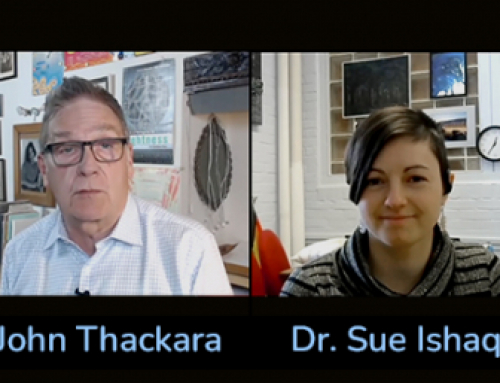
The term metabolic rift describes the alienation between humans and nature that opened up with the growth of the the modern economy. Could the growth of bioregionalism, and research into ‘social-ecological systems’, be signs that the rift may be healing? And if so, what are the opportunities for design to contribute?
[Picture: The Stockholm Resilience Centre investigates the governance of social-ecological systems. Shown here is a rural agricultural system in Madagascar]
Spare a thought for global business leaders as they prepare for this year’s World Economic Forum, in Switzerland. Instead of a guide to apres-ski eateries, their host has sent them Global Risks 2013.
Highlights of this guide to possible futures include a killer virus pandemic; unmanageable deflation; a geomagnetic storm that wipes out the internet; global food shortages; and ‘unprecedented geophysical destruction’. Taken together, says the WEF, their top-trending risks “are a health warning regarding our most critical systems”.
The WEF is not alone in its somber outlook. What their Global Risks does for the economy, Global Trends 2030 does for geopolitics and security. The latter report, just published by the US National Intelligence Council, aggregates the research of 17 intelligence agencies with a collective budget of $75 billion and several hundred advising professors.
Having digested all this input, the NIC report concludes that ‘natural disasters might cause governments to collapse’ and warns that ‘we are at a critical juncture in human history.’
And those are the known risks. More alarming still is the possibility of a so-called ‘ecological surprise’ – a transformational change in one or more natural systems that can be sudden, non-linear, and catastrophic. We know they can happen – but we don’t know when; they cannot be predicted.
To add to the uncertainty there’s no consensus on how risks should be weighted. Trends that signal ‘risk’ to one researcher are perceived as ‘opportunity’ by others.
Wired founder Kevin Kelly, for example, thinks that the increased interdependency of systems, and the compound growth connectivity, are good news: They signify, he says, that our economy is in an ‘evolutionary uplift’ on its way to a ‘post-productive’ mode.
Reflecting on the same phenomena that Kelly celebrates, complex systems researcher Noah Raford draws a different conclusion:
Too much inter-connectivity makes systems vulnerable to ‘phase transition’ – a word that sounds more benign that it probably is.
When a system reaches a critical state, Raford explains, ‘even a tiny change can lead to massive fluctuation and collapse.’ The sheer complexity of interacting social and ecological systems makes it impossible to forecast with certainty how they will evolve – catastrophically or otherwise.
Given that uncertainty, what is our best course: Plough on regardless – or take a different route?
For climate scientists and ecologists, the consequence of unknowability is clear: we must live within the known carrying capacity of the earth’s living systems rather than grow the economy regardless.

To guide us on this cautious path, climate scientists have delineated a set of nine ‘planetary boundaries’ (shown in the graphic above) that describe living systems that are systems essential for human survival.
The chart includes the scientists’ estimate of systems that have been pushed post their safe limits already – the point at which there is a risk of such’irreversible and abrupt environmental change’ that our own survival is threatened.
As conservation ecologist Gretchen Daily concludes, “We cannot go on treating nature like an all-you-can-eat buffet.”
Boundaries? What Boundaries?
Boundaries and limits are anathema, however, to the World Economic Forum.
Its founder, Klaus Schwab, seems almost to relish the global risks identified in this year’s report: He describes them as ‘transformational opportunities’ that we should grab with relish to ’improve the state of the world’ and to pursue the ‘critical goal…of future growth.’
Under the banner of a virile new concept called ‘resilient dynamism’, Schwab’s implicit advice to business leaders is to focus less on the causes of global risks and more on learning ‘how to adapt to changing contexts’ and ‘how to withstand sudden shocks.’
There is no acknowledgement – not a word – that compound economic growth could possibly be the cause of the biosphere-threatening trends described in the Global Risks.
As for the fact that exponential economic growth on a physical planet contravenes basic laws of physics, and mathematics: That is simply ignored.
This is not to deny that resilience – ‘the capacity to bounce back’ as Andrew Zolli‘s book so well explains it – is a desirable condition. The trouble is that a lot of people perceive resilience – dynamic or otherwise – to be a new variety of risk management that gives them the opportunity to carry on with business-as-usual.
Chris Anderson, for example, editor in chief of Wired, states that ‘in an increasingly complex world, we can’t avoid shocks – we can only build better shock absorbers.
But wait a minute: Anderson’s metaphor would just about work if the world around us were indeed a tarmac track disfigured by potholes. But it’s not: Those ‘bumps’ we’re driving over are better understood as the bodies, metaphorical or otherwise, of living systems.
Why would anyone even consider driving over them?
Metabolic Rift
Paved surfaces and shock absorbers have a lot to answer for. By shielding us both from the weather, and from the state of the soil, they act as psychological barriers to empathy with the living systems that support us.
For as long as people have moved into cities – with their paved roads, and media-cultural shock absorbers – they’ve lost physical contact with nature and therefore stopped worrying how their actions mighty be affecting it.
Cities are like intensive care units in which the screens have been covered over, and the audio warnings turned off.
The term metabolic rift was coined by the environmental sociologist John Bellamy Foster to describe the alienation between humans and nature that has opened up with the growth of the the modern economy.
Building on Karl Marx’s critique of how soil nutrients in the countryside are depleted to feed the towns, Foster argues that the capitalist economy, by distracting us from the condition of natural systems, enables us to exploit them without consideration of the consequences.
For so-called ‘dark ecologists’, the metabolic rift is a fundamental driver of our rush to ecological disaster.
The Kevin Kellys, Chris Andersons and Klaus Schwabs of this world can contemplate the destruction of living systems in the interests of the economy not because they evil bad guys, they argue, but because our whole society has been rendered cognitively blind.
In that sense, as Timothy Morton put it so memorably in 2008, ‘the ecological catastrophe has already occurred.’
Limits of resilience
The widespread embrace of resilience in this context – both as scientific practice, and as a cultural meme – is a mixed blessing.
For bodies such as the WEF, resilience is being used as a welcome diversion from the underlying causes of our difficulties – namely, our growth-addicted economic system.
The ‘risks’ scattered on the WEF’s charts are better described as disasters-in-progress: Resource depletion, water stress, malnutrition, biodiversity loss, and habitat destruction are not possibilities to be guarded against – they are the known and actual consequence of the economic system we have now.
In much the same way that ecological disaster moves like The Day After Tomorrow suggest, misleadingly, that the worst problems lie ahead of us – so too does WEF-style risk management.
Hollywood is not alone in its use of the eco-bogeyman card to distract our attention from catastrophes already under way. Hypothetical future disasters have also been used by scientists to promote their projects.
The Cambridge Project for Existential Risk, for example – a joint initiative between a philosopher, a scientist, and a software entrepreneur – begins with the proposition that ‘developments in human technology may soon pose new, extinction-level risks to our species as a whole’.
Wow, that’s scary – and it’s not even a film. It’s almost as scary as the professors’ conclusion that the best response to the ‘threat of human extinction by science and technology’ is (wait for it) ‘a great deal more scientific investigation’.
But I digress. In other respects, resilience has enormous potential.
We know, for example, that extreme weather events are set to increase – so it is of course a good thing to be better prepared to respond effectively to these events – and to do so in new ways.
The most inspiring chapter in Zolli’s book, for example, is about the way new forms of crisis mapping and response that emerged in response to the catastrophe in Haiti. And San Francisco has been taking practical steps to turn itself into a resilient city since 2008.
Cultural surprise
But what about the causes of the future events we must be resilient to?
What about the metabolic rift: Can it be healed?
In his 1962 book The Structure of Scientific Revolutions Thomas Kuhn introduced the term ‘paradigm shift‘ to describe the ways that scientific world views periodically undergo radical change in what appears at the time to be a sudden leap.
Kuhn explains that these ‘sudden’ paradigm shifts in world view follow years, sometimes decades, in which scientists have encountered anomalies that don’t fit in with the dominant paradigm of the time.
Could a paradigm shift in our understanding of ‘progress’ and ‘the economy’ be imminent? Are there grounds for optimism that the modernist myth – that the biosphere is a repository of resources to fuel endless growth – will be supplanted by something new?
The conditions are surely ripe for a new narrative to emerge. According to the German Advisory Council on Climate Change (WGBU), the heavyweight scientific body that advises the German Federal Government on ‘Earth System Megatrends’, a ‘global transformation of values’ along these lines has already begun.
As reported here last month, this post-materialist thinking is not limited to the well-off. In South Korea, Mexico, Brazil, India, and China, the WGBU also found, a significant majority ‘supports ambitious climate protection measures’ and would ‘welcome a new economic system’ to achieve that.
Many people despair, however, that utopian visions and ‘latent values’ are no substitute for positive change in the real world.
Whatever values we might wish the world to hold, they say, the obstacles to real-world change are insurmountable. These obstacles include system-wide ‘path dependencies’ (such as the financial system, and debt); the ‘lock-in effect’ of existing laws; and all-round institutional inertia.
These obstacles are real, of course – but this is where the National Intelligence Council’s Global Trends gets interesting. It plots a variety of ways in which political and social change on the ground could undermine these institutional ‘path dependencies’.
Its report anticipates, for example, that power ‘could shift to networks and coalitions in a multipolar world.’ Enabled by new technologies, the NIC speculates, so-called ‘non-state actors’ – along with subnational actors such as cities, and city-regions – could play ‘important governance roles’. It describes this scenario as ‘political multi-polarisation’.
The NIC’s scenarios raise an interesting question: if profound paradigm shifts are possible in the world views of science, as Thomas Kuhn demonstrated; if ‘ecological surprises’ can transform natural systems, as ecologists have shown; and if today’s monolithic states could be transformed by the NIC’s ‘multi-polarisation’; in that case could a profound phase-shift in cultural belief systems also be on the cards?
It is surely plausible that a convergence of latent value change, as described by the WGBU, and the political fragmentation, as anticipated by the NIC, could unpave the way for a mosaic of globally-linked but self-governing bioregions.
Bioregonal Stewardship
On the ground, examples of a transformation along these lines are already emerging. As Rob Hopkins, co-founder of the Transition Network, explains in this short video, regional food economies, local currencies, and community energy projects are no longer fringe.
As these local food, water and soil projects mature, and connect with each other, we are seeing see examples appear in urban contexts of the social-ecological innovation that, until now, has only been studied in places like the Great Barrier Reef or tropical rain forests.
For the Stockholm Resilience Centre, cornerstone of what it calls ‘successful common-pool resource management’ is innovative forms of social connectivity among the people who are stewarding the land.
Based on its initial findings, the SRC recently published Seven Principles for Enhancing the Resilience of Ecosystem Services. These are:
1 maintain diversity and redundancy
2 manage connectivity
3 manage slow variables and feedbacks
4 foster an understanding of social ecological systems as complex adaptive systems
5 encourage learning and experimentation
6 broaden participation
7 promote polycentric governance systems
Those principles pose a number of challenges for design. These will be the focus of future posts on this blog, and of forthcoming Doors of Perception encounters with our partners.




